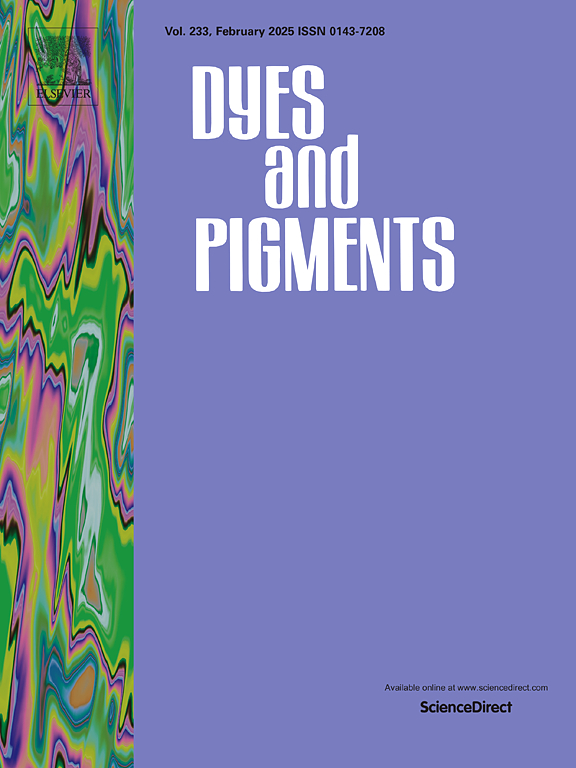Multifunctional nanocomposite system with positing and Mn2+-enhanced-Cas12a shearing for precise and efficient intracellular imaging
IF 4.1
3区 工程技术
Q2 CHEMISTRY, APPLIED
引用次数: 0
Abstract
The CRISPR/Cas12a fluorescence system is commonly used for in vitro detection, and its application in cells is challenging due to the difficulty in achieving precise localization and good reaction kinetics. This work creatively developed a multifunctional nanocomposite system (MNCS) with positing and Mn2+-enhanced-Cas12a shearing for precise and efficient intracellular imaging of microRNA-155 (miRNA-155). The rolling circle amplification (RCA) was well-engineered for generating a long single strand DNA (ssDNA), which was encoded with abundantly repetitive AS1411 aptamers for targeting cancer cells and functional sequences for activating Cas12a. This long ssDNA coupled MnO2 nanoparticles (NPs), FAM and BHQ1 labeled reporter probes and CRISPR RNA/Cas12a (crRNA/Cas12a) to construct MNCS. AS1411 aptamers on ssDNA improved the targeting ability of MNCS, thereby reducing interference caused by mistargeted cells. As MNCS entered target cells, intracellular glutathione (GSH) converted MnO2 into Mn2+, causing the disintegration of MNCS. In this case, the “lock-in state” crRNA hybridized with intracellular miRNA-155 to expose the binding site on crRNA so that it bound with functional sequences on ssDNA. Under the accelerated action of Mn2+, the trans-cleavage activity of Cas12a was highly activated for shearing reporter probes, thus recovering fluorescence signal of FAM. The MNCS with positing and Mn2+-enhanced-Cas12a shearing allowed in vitro detection of miRNA-155 with a low limit of detection of 4.67 pM, and also enabled highly sensitive intracellular imaging of miRNA-155. The coupling of targeting capability of AS1411 aptamers with significantly enhanced reaction kinetics of CRISPR/Cas12a system by Mn2+ provides a promising intracellular imaging strategy for nucleic acid.
具有定位和Mn2+增强cas12a剪切的多功能纳米复合系统,用于精确和高效的细胞内成像
CRISPR/Cas12a荧光系统通常用于体外检测,但由于难以实现精确定位和良好的反应动力学,其在细胞中的应用具有挑战性。本研究创造性地开发了一种多功能纳米复合系统(MNCS),该系统具有定位和Mn2+增强的cas12a剪切功能,可用于精确高效地对microRNA-155 (miRNA-155)进行细胞内成像。滚动圈扩增(RCA)被精心设计用于生成长单链DNA (ssDNA),该DNA编码有大量重复的AS1411适体,用于靶向癌细胞和激活Cas12a的功能序列。这种长ssDNA结合MnO2纳米颗粒(NPs)、FAM和BHQ1标记的报告探针和CRISPR RNA/Cas12a (crRNA/Cas12a)构建MNCS。ssDNA上的AS1411适配体提高了MNCS的靶向能力,从而减少了错靶细胞造成的干扰。当MNCS进入靶细胞时,细胞内谷胱甘肽(GSH)将MnO2转化为Mn2+,导致MNCS解体。在这种情况下,“锁定状态”的crRNA与细胞内miRNA-155杂交,暴露crRNA上的结合位点,使其与ssDNA上的功能序列结合。在Mn2+的加速作用下,Cas12a的反式裂解活性被高度激活,用于剪切报告基因探针,从而恢复FAM的荧光信号。定位和Mn2+增强cas12a剪切的MNCS可以体外检测miRNA-155,低检测限为4.67 pM,并且还可以对miRNA-155进行高灵敏度的细胞内成像。AS1411适体的靶向能力与Mn2+显著增强CRISPR/Cas12a系统反应动力学的耦合为核酸的细胞内成像策略提供了一种很有前景的方法。
本文章由计算机程序翻译,如有差异,请以英文原文为准。
求助全文
约1分钟内获得全文
求助全文
来源期刊

Dyes and Pigments
工程技术-材料科学:纺织
CiteScore
8.20
自引率
13.30%
发文量
933
审稿时长
33 days
期刊介绍:
Dyes and Pigments covers the scientific and technical aspects of the chemistry and physics of dyes, pigments and their intermediates. Emphasis is placed on the properties of the colouring matters themselves rather than on their applications or the system in which they may be applied.
Thus the journal accepts research and review papers on the synthesis of dyes, pigments and intermediates, their physical or chemical properties, e.g. spectroscopic, surface, solution or solid state characteristics, the physical aspects of their preparation, e.g. precipitation, nucleation and growth, crystal formation, liquid crystalline characteristics, their photochemical, ecological or biological properties and the relationship between colour and chemical constitution. However, papers are considered which deal with the more fundamental aspects of colourant application and of the interactions of colourants with substrates or media.
The journal will interest a wide variety of workers in a range of disciplines whose work involves dyes, pigments and their intermediates, and provides a platform for investigators with common interests but diverse fields of activity such as cosmetics, reprographics, dye and pigment synthesis, medical research, polymers, etc.
 求助内容:
求助内容: 应助结果提醒方式:
应助结果提醒方式:


